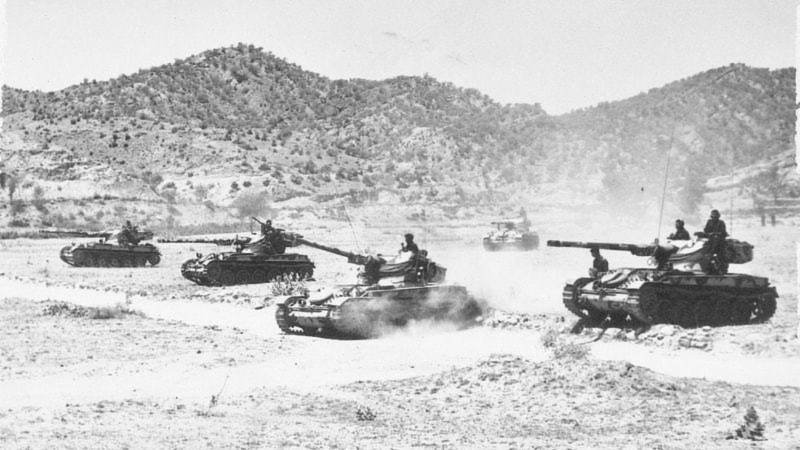Pakistan’s Enduring Legacy Of 6 September: From 1965 To 2025
Arooba Younas
6 September 2025


When the clocks struck 3 on 6 September 1965, the Indian Army crossed Pakistan’s international borders without any formal declaration of war. This cowardly attack was an unsuccessful attempt to seek revenge for the subcontinent’s partition. Yet India’s strategic calculus, focused entirely on military might, did not take into account the true mettle possessed by the Pakistani nation and the tenacity of Pakistan’s armed forces.
From Chawinda to Dwarka, India’s plans faltered. Every battlefield painted a sordid picture of India’s poor strategy and flawed leadership. This stood in stark contrast to Pakistan’s visionary leadership and the strategic use of military resources. Hence, India’s fantasy of having a toast in Lahore Gymkhana remained a dream.
The Pakistan Air Force (PAF) lived up to its motto of ‘Second to None’ and played a defining role as an insurmountable wall against India’s dreams of capturing Pakistani territory. It gave the nation heroes like Squadron Leaders Sarfaraz Ahmed Rafiqui and Mohammad Mahmood (MM) Alam. On the eve of 6 September, Sqn Ldr Rafiqui led a formation of three F-86 Sabres to strike the Indian Air Force’s (IAF) Halwara Air Base and scored a kill after he engaged with the enemy’s Hunters. His guns jammed in another dogfight. However, he remained undeterred, continued to defend his comrades, and instilled fear in the hearts of IAF pilots. Meanwhile, in an unparalleled feat, Sqn Ldr MM Alam downed nine Indian warplanes, shooting down five of them in an unrivalled global record of less than 60 seconds.
It is important to note that Pakistan’s achievement of crucial land operations became possible owing to the PAF’s support to the land forces. This air-ground coordination was instrumental in enabling Pakistan to achieve its strategic objectives. A Special Air Support Wing was set up along the 150-mile arc between Jammu and Fazilka, facing Sialkot, Lahore, and Kasur at the most active battlefront. This is where the major proportion of the PAF close-support effort took place. In stark contrast, India’s Retired Air Chief Marshal PC Lal acknowledged the absence of coordination between the IAF and the Indian Army, as neither side shared their battle plans. Consequently, the war plans drafted by the Indian Army Chief General Chaudhri and the Ministry of Defence did not assign any role to the IAF — a strategic folly.
Simultaneously, Pakistani ground forces and the Pakistan Navy (PN) also emerged as indomitable forces. In the largest battle of tanks since the Second World War, Chawinda became the graveyard of 600 invading Indian tanks, reaffirming that battles are won through strategy and not the mere possession of advanced weaponry. Operation Dwarka was launched by PN with the objectives of keeping the waters surrounding Pakistan open to incoming ships, destroying the Indian radar installation at Dwarka, Gujarat, and drawing Indian warships out of Bombay port into the Arabian Sea. This is where Ghazi, Pakistan’s submarine, lurked silently. In a mere four minutes, the identified targets were bombarded successfully. Far more than achieving the tactical objectives, this naval operation created ripples through the Indian Navy by exponentially shattering their morale.
Indian leadership lacked involvement at the frontlines. This worked to Pakistan’s advantage. Their hesitation to lead with bold action caused a chain reaction of dismay in their troops. On the contrary, Pakistan’s military leaders inspired through example. PAF Chief Nur Khan personally flew the first sortie to engage Indian jets. Moreover, Major Aziz Bhatti’s presence as a fearless leader on the frontlines bolstered the spirits of his company of the 17th Punjab Regiment. Lion-hearted, he periodically rose from his trench to observe enemy positions to guide artillery fire that crushed India’s dream of capturing Lahore.
This legacy of excellence was again visible during the May 2025 war between Pakistan and India. While the 1965 war was a spectacle of chivalry, May 2025 reflected the PAF’s multi-domain preparedness and new dimensions of technology. Drunk on its arrogance, India was disgraced yet again at the hands of a resolute power. Modi’s reckless adventurism proved to be a strategic disaster and a miscalculation of Pakistan’s strength. India’s vanity was reduced to smithereens, just like their four Rafales, one Su-30MKI, one MiG-29, one Heron drone, and two S-400 batteries. This was achieved as a result of Pakistan’s seamlessly integrated “kill chain”, executed under the matchless strategic command of PAF’s Air Chief Marshal Zaheer Ahmad Baber Sidhu.
Pakistan’s strategic brilliance and spirit of defiance hark back to the words of Rai Milan, penned down in his war diary during the 1965 war, that India’s claims of victory were bogus, as ground realities showed destroyed Indian tanks and a victorious Pakistan. His words echo today, even more resonantly, in the wake of India’s ill-conceived and poorly implemented Operation Sindoor and Pakistan’s spectacular accomplishments perfected by its military leadership. The legacy of 1965 lives on!


The Centre for Aerospace & Security Studies (CASS) was established in July 2021 to inform policymakers and the public about issues related to aerospace and security from an independent, non-partisan and future-centric analytical lens.

@2025 – All Right Reserved with CASS Lahore.